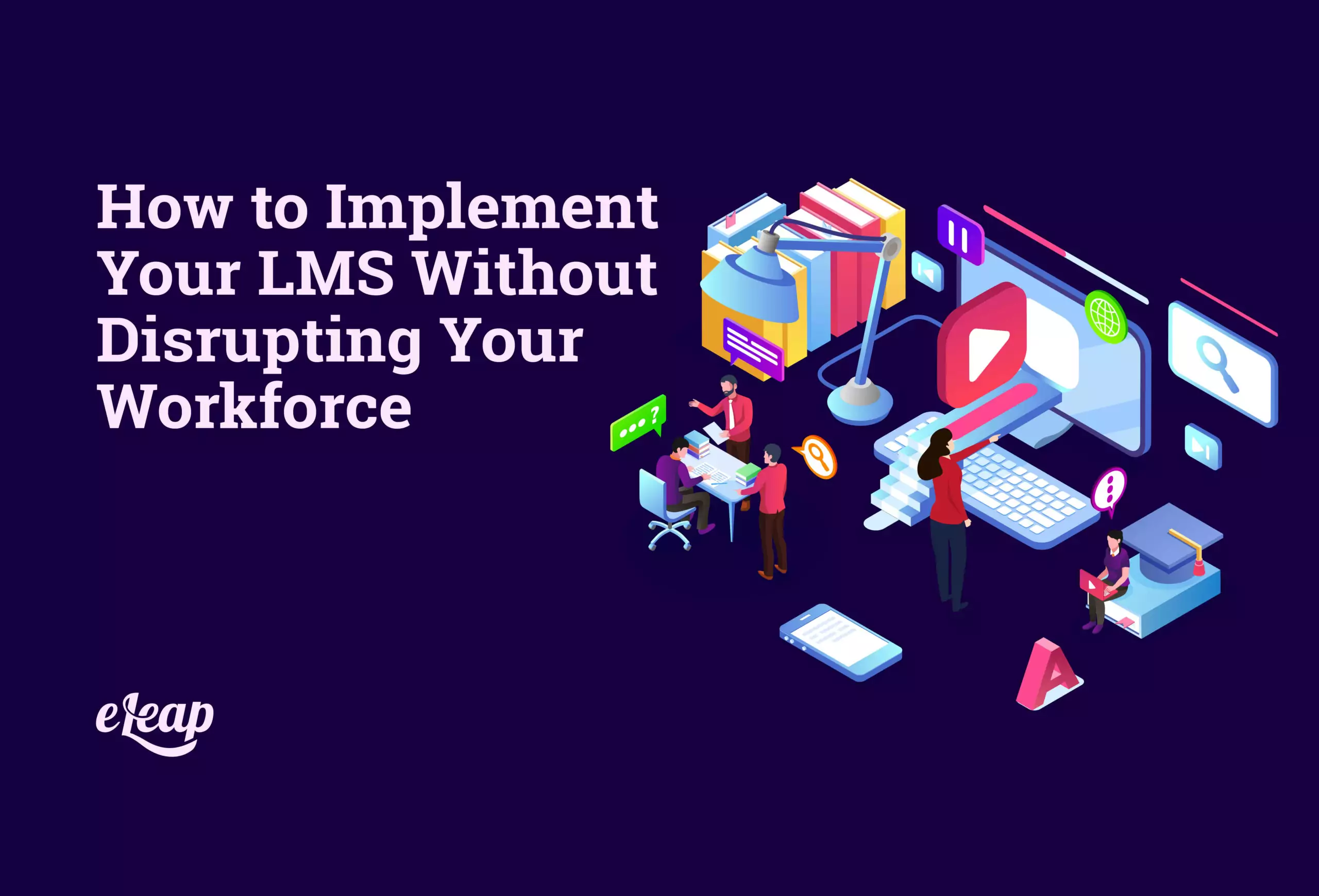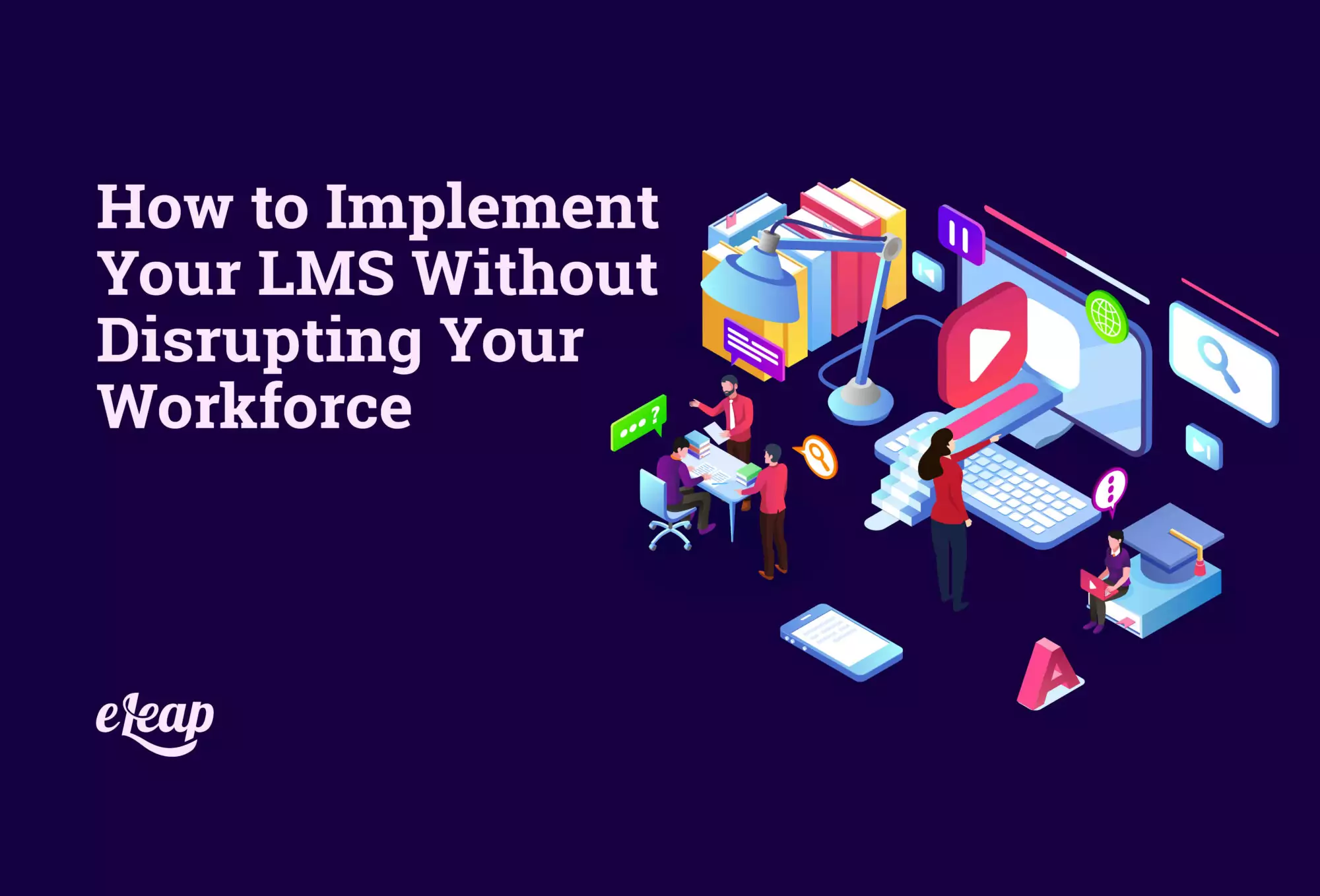How to Implement Your LMS Without Disrupting Your Workforce

Implementing a modern learning management system is an integral part of most organizations’ training and learning strategy. Learning management systems and eLearning have completely replaced conventional methods of training for a huge number of organizations. And for good reason, since there is numerous data to support the fact that an LMS is the best way to train your team. However, despite how well an LMS can work, the first time you use one of these systems can be a bit challenging, despite the fact that they have become so widely accepted.

An LMS might feel foreign to anyone who is unfamiliar with them or has never been exposed to eLearning before. Learning a new process is always challenging, and your employees will likely take a while to adapt, too. It’s important to implement your new LMS in the right way to make sure that you don’t give learners a negative first experience with the system. If you put your learners off your LMS from the get-go, all of its potential training benefits will be negated.
Before anything, it’s important to know what to expect when you first start using an LMS. Organizations and learners can benefit from eLearning in many ways, including:
Reduced Costs
Installing a learning management system is an investment, but in the end, it will save your organizations money. Better training leads to improved productivity and performance, which means a greater return on your investment. Similarly, you won’t have to spend money continually on costs typically associated with conventional training methods.
Higher Retention Rates
When using a Learning Management System, training is more engaging, which contributes to improved retention. As well, employees can easily take quizzes to determine if any parts of the training need to be repeated, and they can retake those parts whenever they like.
Standardized Processes
Standardizing training across your organization is possible with eLearning. The training materials should be made available to all employees, including those in remote locations.
Improved Productivity
In addition to improving employee engagement and productivity, LMSs have been shown to improve productivity as well. There’s just something about them that makes them more engaging. Additionally, they allow remote workers to be trained regardless of their location and time zone.
Better Management and Resources
LMSs go beyond training employees; they allow organizations to monitor training, collect and analyze data, bolster employee collaboration, and many other tasks. Traditional training provides few tools compared to eLearning. Those tools are also accessible in real-time, no matter where you are.
What to Remember When First Implementing an LMS
As you know, a Learning Management System can provide many positive benefits once in operation; however, getting it up and running without ruffling any feathers can be a bit of a challenge. To avoid negative consequences from improper implementation, let’s talk about some tips to ensure that your LMS is introduced smoothly.
Start By Setting Set Clear and Defined Objectives
In order for your new learning management system to be effective, your employees need to be clear about what to expect. It’s also important that leaders show enthusiasm about the introduction of the new system. The implementation of a new, critical tool will put many employees off if they aren’t led with positivity or are taught to fear the change. In particular, employees with no prior exposure to eLearning will likely have an even harder time adopting the system if the introduction isn’t done right. You will not succeed if you do not establish clear objectives and introduce the system in a positive manner.
Slow Introductions Are Key
You don’t want to suddenly try and force your employees to learn a brand new system. You need to appreciate that it will take a learning curve and be sensitive to that when you start introductions to the LMS. It’s good to have all employees, even those with years of experience, go through training materials so they can get an understanding of how the LMS works and what to expect. The courses shouldn’t be suddenly thrust upon them and they should not be expected to complete them without being given time to adapt. Slowly introduce your new learning management system to them so they can adapt and accept it, as well as see the many benefits it has for them. This is particularly important to consider for employees who might be more tech illiterate.
Keep Courses Short and Digestible
If you use an LMS, make sure the content isn’t too long or difficult to understand. This will only mean too much information for employees to try and digest on top of learning the way the system works. If they find the content to be too lengthy and confusing when it’s their first exposure to the system, it will only turn them off in the long run.
Use Your Data
When you have the LMS running, you will be able to access the data, which is one of the system’s biggest benefits. Your eLearning content can be tailored specifically to your employees and organization based on this data. Furthermore, you can use data to identify which employees might need additional help adapting to the new learning management system.
Give Out Rewards
Keeping your employees motivated and associating positive experiences with the LMS can be easier by rewarding their success when using the eLearning system. If you don’t want to provide a monetary or tangible reward, you can create other types of rewards. Recognition of hard work and enthusiasm to learn and adapt to the system can make a big difference.
LMS implementation is an excellent decision if you want to significantly improve your organization’s training. Shopping around, selecting the right LMS, and setting it up are some of the hardest parts of the process. But the work doesn’t stop there. Introducing your new LMS incorrectly to your team could endanger all the work you put into choosing it. Implementing your LMS in a timely manner will ensure employees feel comfortable with it, which is the first step to reaping its benefits.